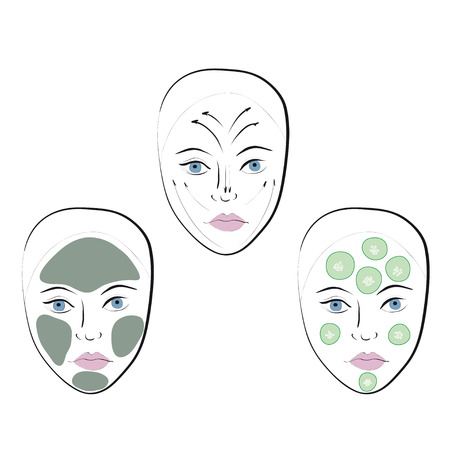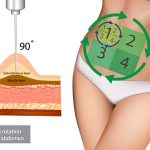1. What Is Hyperpigmentation?
Hyperpigmentation is a common skin condition that causes certain areas of the skin to become darker than the surrounding skin. This darkening occurs due to an excess production of melanin, the pigment responsible for skin color. While hyperpigmentation itself is harmless, it can be a cosmetic concern for many individuals.
How Hyperpigmentation Affects Different Skin Types
Hyperpigmentation can affect people of all skin types, but its appearance and treatment may vary depending on skin tone. Individuals with darker skin tones are more prone to hyperpigmentation because they naturally produce more melanin. Below is a comparison of how hyperpigmentation appears on different skin types:
| Skin Type | Common Causes | Appearance |
|---|---|---|
| Fair Skin | Sun exposure, post-inflammatory hyperpigmentation (PIH), melasma | Light brown or reddish spots |
| Medium Skin | Hormonal changes, acne scars, sun damage | Darker brown patches |
| Darker Skin | Aging, PIH from acne or injuries, melasma | Deep brown or grayish discoloration |
Main Causes of Hyperpigmentation
The overproduction of melanin can be triggered by several factors, including:
- Sun Exposure: UV rays stimulate melanin production, leading to sunspots and freckles.
- Hormonal Changes: Conditions like pregnancy and birth control use can cause melasma.
- Aging: Over time, age spots (also known as liver spots) develop due to prolonged sun exposure.
- Skin Inflammation: Acne, eczema, and injuries can lead to post-inflammatory hyperpigmentation.
- Certain Medications: Some medications, such as chemotherapy drugs, can cause skin darkening.
The Impact of Hyperpigmentation on Daily Life
While hyperpigmentation does not pose a health risk, it can affect self-confidence and influence skincare routines. Many people seek treatments such as topical creams, chemical peels, or laser therapy to reduce discoloration and achieve an even complexion. Understanding the underlying cause of hyperpigmentation is essential in determining the most effective treatment approach.
2. Common Causes of Hyperpigmentation
Hyperpigmentation occurs when the skin produces excess melanin, leading to dark patches or spots. Several factors can trigger this condition, and understanding these causes can help in prevention and treatment.
Sun Exposure
One of the most common causes of hyperpigmentation is sun exposure. Ultraviolet (UV) rays stimulate melanin production as a way to protect the skin from damage. Over time, excessive sun exposure can lead to sunspots, also known as age spots or liver spots.
Hormonal Changes
Hormonal fluctuations, especially during pregnancy, menopause, or while taking birth control pills, can lead to a type of hyperpigmentation known as melasma. This condition causes dark patches, often on the face, and is more common in women.
Inflammation and Skin Trauma
Skin injuries such as acne, cuts, burns, or even eczema can lead to post-inflammatory hyperpigmentation (PIH). After the skin heals, it may leave behind darkened areas that take time to fade.
Certain Medications
Some medications can trigger hyperpigmentation as a side effect. These include certain antibiotics, chemotherapy drugs, and antimalarial medications. If you notice dark patches after starting a new medication, consult your healthcare provider.
Common Causes of Hyperpigmentation and Their Effects
| Cause | Description | Affected Areas |
|---|---|---|
| Sun Exposure | UV rays increase melanin production, leading to sunspots. | Face, hands, shoulders |
| Hormonal Changes | Pregnancy and birth control pills can cause melasma. | Forehead, cheeks, upper lip |
| Inflammation & Skin Trauma | Cuts, burns, and acne may leave dark marks after healing. | Anywhere on the body |
| Certain Medications | Chemotherapy and antibiotics can cause pigmentation changes. | Face and body |
By identifying the underlying cause of hyperpigmentation, individuals can take appropriate steps to manage or prevent further discoloration. In the next section, we’ll explore different types of hyperpigmentation and how they affect the skin.

3. Different Types of Hyperpigmentation
Hyperpigmentation can appear in different forms, and understanding these variations can help determine the best treatment approach. Below, we break down the most common types: melasma, sunspots, and post-inflammatory hyperpigmentation (PIH).
Melasma
Melasma is a type of hyperpigmentation that appears as brown or grayish patches, usually on the face. It’s often triggered by hormonal changes, making it common among pregnant women and those taking birth control pills. Sun exposure can worsen melasma, so wearing sunscreen daily is essential.
Sunspots
Also known as liver spots or solar lentigines, sunspots are dark patches caused by prolonged sun exposure. They typically appear on areas frequently exposed to the sun, such as the face, hands, shoulders, and arms. While they are harmless, many people seek treatments like laser therapy or chemical peels to reduce their appearance.
Post-Inflammatory Hyperpigmentation (PIH)
PIH occurs after skin inflammation or injury, such as acne, burns, or cuts. When the skin heals, it may leave behind darkened patches. Unlike melasma and sunspots, PIH can fade over time with proper skincare and treatments like exfoliation and topical brightening agents.
Comparison of Different Types of Hyperpigmentation
| Type | Main Causes | Common Areas | Treatment Options |
|---|---|---|---|
| Melasma | Hormonal changes, sun exposure | Face (cheeks, forehead, upper lip) | Sunscreen, topical creams (hydroquinone), laser treatments |
| Sunspots | UV exposure | Face, hands, shoulders | Chemical peels, laser therapy, retinoids |
| Post-Inflammatory Hyperpigmentation (PIH) | Skin inflammation (acne, burns, injuries) | Affected areas from previous skin damage | Sunscreen, exfoliation, vitamin C serums |
No matter the type of hyperpigmentation you’re dealing with, protecting your skin from the sun and using targeted treatments can help improve its appearance over time.
4. Preventing Hyperpigmentation
Preventing hyperpigmentation is easier than treating it. By taking proactive steps in your daily routine, you can reduce the risk of developing dark spots and uneven skin tone. Here are some effective strategies to help keep your skin clear and radiant.
Sun Protection: Your First Line of Defense
Exposure to ultraviolet (UV) rays is one of the leading causes of hyperpigmentation. Protecting your skin from the sun can significantly reduce the risk of dark spots and discoloration.
Essential Sun Protection Tips
- Wear Sunscreen Daily: Use a broad-spectrum sunscreen with SPF 30 or higher, even on cloudy days.
- Reapply Regularly: Reapply sunscreen every two hours, especially if youre outdoors.
- Seek Shade: Avoid direct sun exposure during peak hours (10 AM – 4 PM).
- Wear Protective Clothing: Use hats, sunglasses, and long sleeves for extra protection.
A Consistent Skincare Routine
An effective skincare regimen can help prevent hyperpigmentation by keeping your skin healthy and resilient.
Key Skincare Steps
| Step | Description |
|---|---|
| Cleansing | Use a gentle cleanser to remove dirt and oil without stripping moisture. |
| Exfoliation | Exfoliate 2-3 times per week to remove dead skin cells and promote cell turnover. |
| Hydration | Apply a hydrating moisturizer to maintain skin barrier function. |
| Treatment Serums | Use serums with ingredients like vitamin C, niacinamide, or licorice extract to brighten skin. |
| Sunscreen | The most crucial step—apply sunscreen every morning. |
Lifestyle Adjustments for Healthy Skin
Your lifestyle choices play a significant role in preventing hyperpigmentation. Making small changes can have a big impact on your skins overall health.
Healthy Habits to Follow
- Avoid Picking at Your Skin: Scratching or squeezing blemishes can lead to post-inflammatory hyperpigmentation.
- E at a Balanced Diet: Foods rich in antioxidants, such as berries, leafy greens, and nuts, can support skin health.
- Stay Hydrated: Drinking enough water helps maintain an even complexion.
- Get Enough Sleep: Rest allows your skin to repair and regenerate overnight.
- Manage Stress: High stress levels can trigger inflammation that contributes to pigmentation issues.
5. Treatment Options for Hyperpigmentation
Hyperpigmentation can be managed through various treatments, ranging from over-the-counter topical solutions to advanced dermatological procedures. Choosing the right option depends on the type and severity of pigmentation, skin type, and individual preferences.
Topical Treatments
Topical treatments are often the first line of defense against hyperpigmentation. These products contain active ingredients that help lighten dark spots and even out skin tone over time.
Common Ingredients in Topical Treatments
| Ingredient | Function |
|---|---|
| Hydroquinone | A skin-lightening agent that inhibits melanin production. |
| Retinoids | Promote cell turnover and fade discoloration. |
| Vitamin C | An antioxidant that brightens skin and reduces pigmentation. |
| Kojic Acid | A natural ingredient that helps lighten dark spots. |
| Niacinamide | Reduces inflammation and prevents new pigmentation. |
Chemical Peels
Chemical peels use acids to exfoliate the top layer of the skin, promoting cell regeneration and reducing pigmentation. They vary in strength:
- Superficial Peels: Use mild acids like glycolic acid; best for minor discoloration.
- Medium Peels: Utilize stronger acids like trichloroacetic acid (TCA); effective for moderate pigmentation.
- Deep Peels: Use powerful agents like phenol; reserved for severe hyperpigmentation.
Laser Therapy
Laser treatments target pigmented areas with concentrated light energy, breaking down excess melanin. There are different types of lasers used for hyperpigmentation:
| Laser Type | Description |
|---|---|
| Ablative Lasers | Remove outer skin layers to reveal fresh skin underneath. |
| Non-Ablative Lasers | Stimulate collagen production without damaging the surface. |
| Pico Lasers | A highly advanced laser that breaks down pigment with minimal downtime. |
Professional Dermatological Procedures
If topical treatments and peels don’t provide desired results, professional procedures may be recommended by a dermatologist.
Microdermabrasion
This procedure gently exfoliates the skin using tiny crystals or a diamond-tip device, helping to fade pigmentation over multiple sessions.
Medi-Facials with Brightening Agents
A professional facial that includes specialized serums and masks designed to reduce hyperpigmentation while hydrating the skin.
MesoTherapy
A technique where skin-brightening ingredients are injected directly into targeted areas to accelerate pigment reduction.
Lifestyle Adjustments and Prevention
Treating hyperpigmentation is only part of the solution—preventing further discoloration is equally important. Here are some key preventive measures:
- Sunscreen: Daily application of broad-spectrum SPF 30 or higher prevents UV-induced pigmentation.
- Avoid Picking at Skin: Scratching or popping pimples can lead to post-inflammatory hyperpigmentation.
- A Gentle Skincare Routine: Using soothing ingredients helps prevent irritation-related discoloration.
- A Healthy Diet: Nutrient-rich foods support skin healing and overall complexion health.


